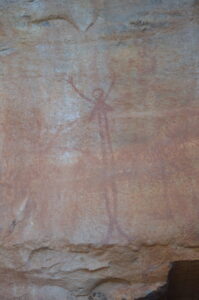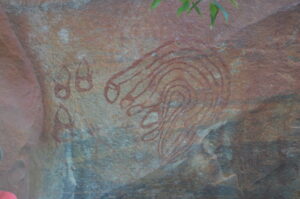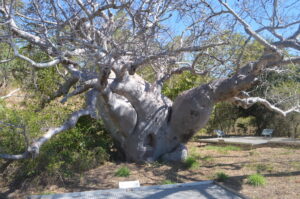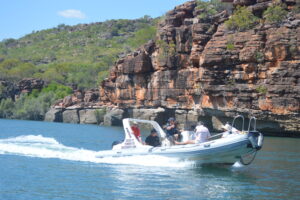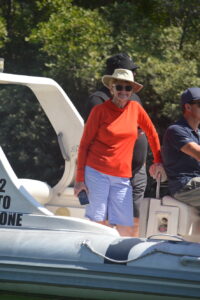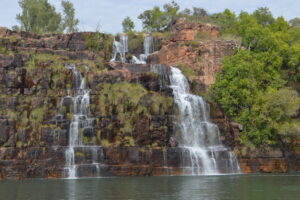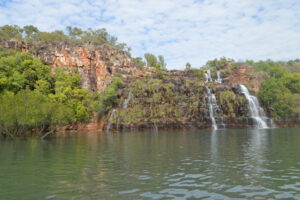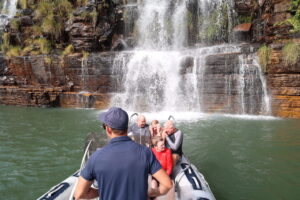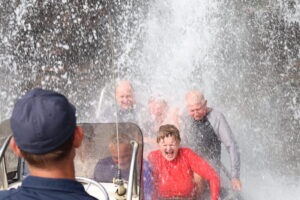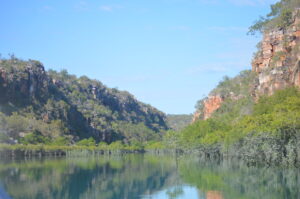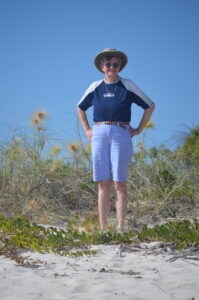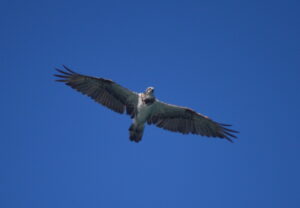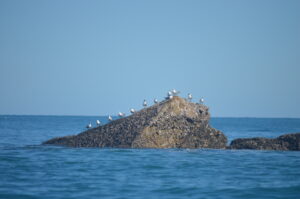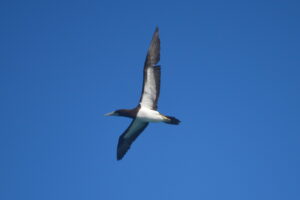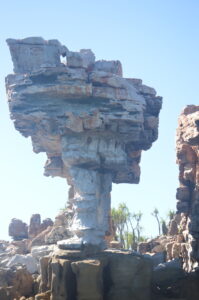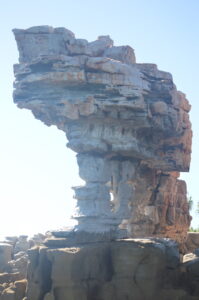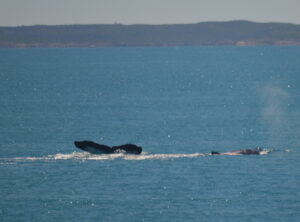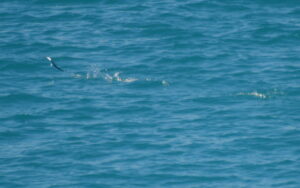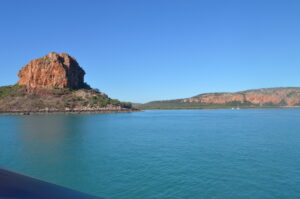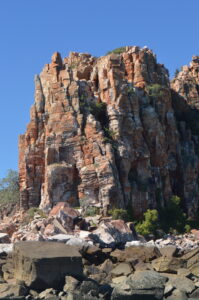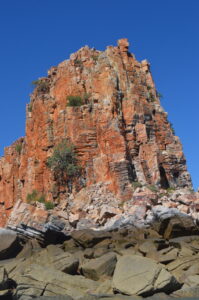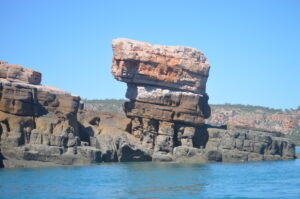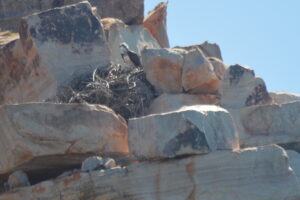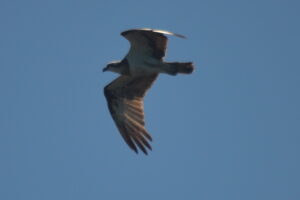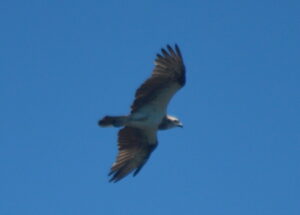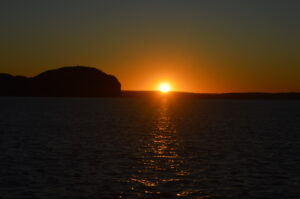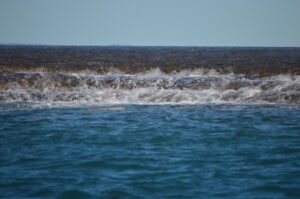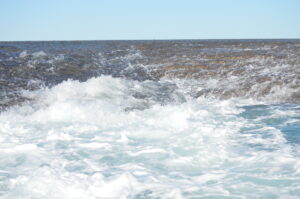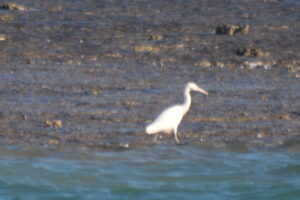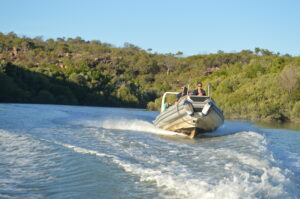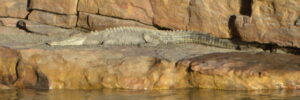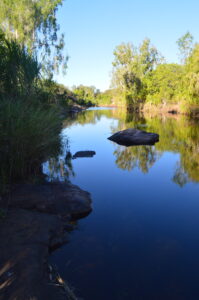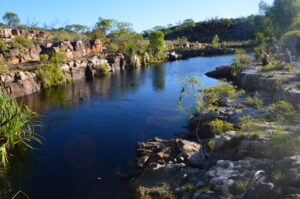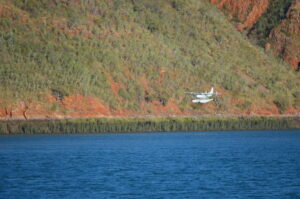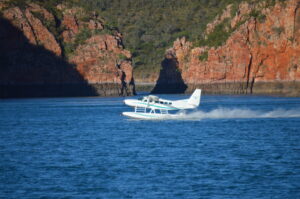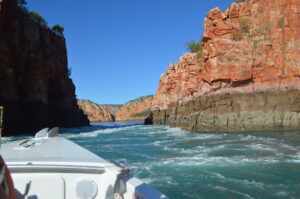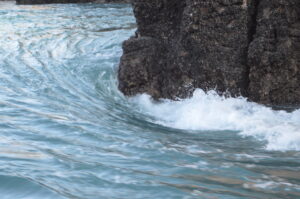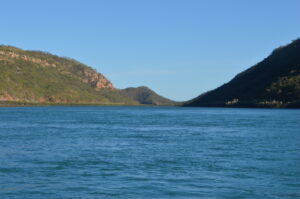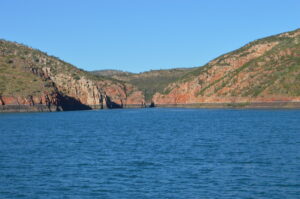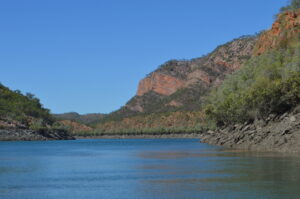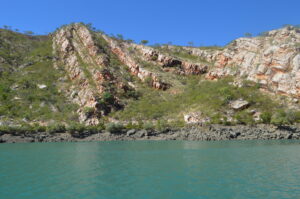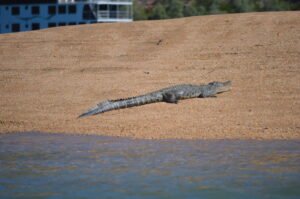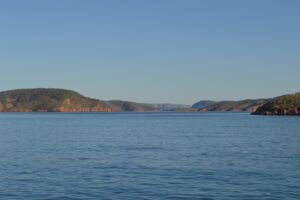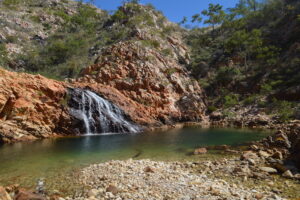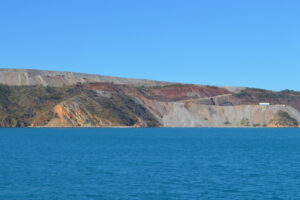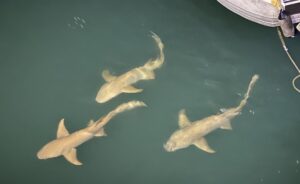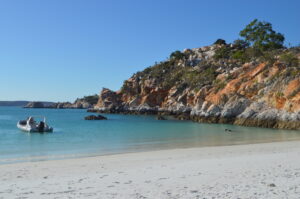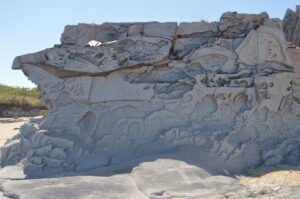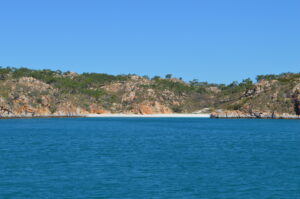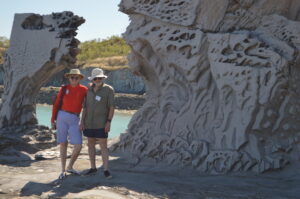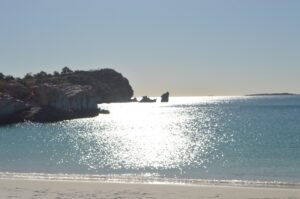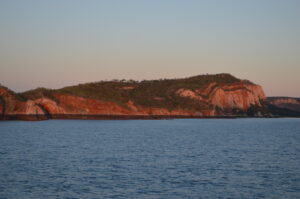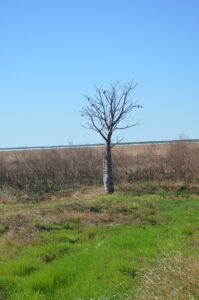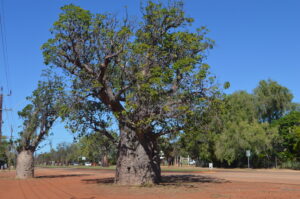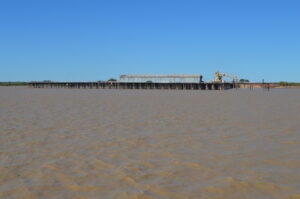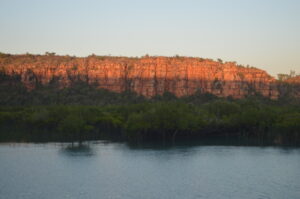 We had an early trip to shore, up an inlet off Rothsay Water, to see some very good aboriginal rock art. Apparently, there are even better examples not far from here, but the local aboriginal tribe requests very large fees for permission to view them, so no-one goes.
We had an early trip to shore, up an inlet off Rothsay Water, to see some very good aboriginal rock art. Apparently, there are even better examples not far from here, but the local aboriginal tribe requests very large fees for permission to view them, so no-one goes.
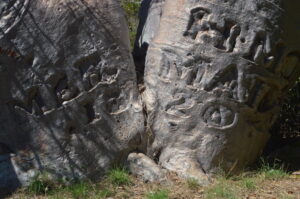 Next was a visit to Careening Island, where an early British ship stopped for some time for repairs. Part of a UNESCO-protected zone, there are many animals and birds kept safe around this area. All that we saw, though, were large Boabab trees into which sailors had carved their ships’ names and the years when they were on the island.
Next was a visit to Careening Island, where an early British ship stopped for some time for repairs. Part of a UNESCO-protected zone, there are many animals and birds kept safe around this area. All that we saw, though, were large Boabab trees into which sailors had carved their ships’ names and the years when they were on the island.
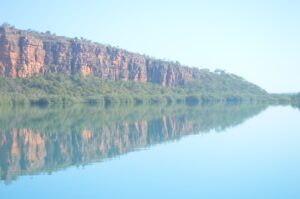
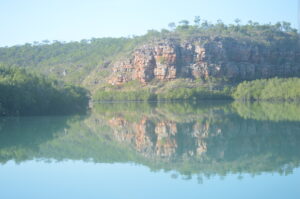 Now we are on another long leg of the voyage, towards Fredericks Bay, where we will be staying overnight. I am once again reminded that Australia has some beautiful sights and countryside, but each site or view is a long way away from the next one. Sue and I were discussing what were the most and least useful things we had brought with us. Least useful for me was a second pair of long trousers, most useful was probably the Tilley hat which I was given by Dad (broad-brimmed but with straps which make it stay on your head in all sorts of wind). However a good book runs a close second at times …. I am onto my third.
Now we are on another long leg of the voyage, towards Fredericks Bay, where we will be staying overnight. I am once again reminded that Australia has some beautiful sights and countryside, but each site or view is a long way away from the next one. Sue and I were discussing what were the most and least useful things we had brought with us. Least useful for me was a second pair of long trousers, most useful was probably the Tilley hat which I was given by Dad (broad-brimmed but with straps which make it stay on your head in all sorts of wind). However a good book runs a close second at times …. I am onto my third.

